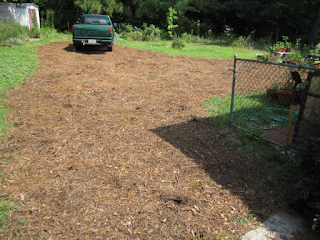Welcome back to another episode of Lost In The Farmer’s Market. For
this week’s episode we are spotlighting a specific garden annual that is native
to the United States. If you believe the agricultural chemical companies this
annual plant is one of the scourges of the perfectly trimmed lawn. Then again I
like to suggest that the perfectly trimmed lawn is the scourge of the landscape
as it is thoroughly impossible to maintain because it is unnatural. The very idea
of having a neatly mowed lawn around your property comes from the deception of
wealth. Anyone who was rich enough did
not need to grow a garden to supplement their food supply and thus could afford
to demonstrate their wealth by having a lawn. In practice lawns serve no real
purpose other than erosion control, and realistically the amount of fertilizers
and chemicals needed to maintain a lawn is prohibitive. Of course, the golf
industry isn’t helping at all, as they often get legal allowances that let them
skirt drought restrictions and chemical runoff laws.
All that leads us back to the topic, what is a gardener to do about
drought, and what specific crop is commonly found as an annual in your lawn.
The answer is a group of plants commonly called the Purselane group, their
scientific name is Portulaca and they
are a native succulent annual that prefers the hot season and tolerates a wide
variety of poor soils. You may have seen Purselane before at the garden center
because fancy-flowering versions look like the picture below.
 |
| Portulaca sp. – Flat leaf Purselane [Variety unknown] |
Purselanes are known for their large ‘cactus’ flowers, but this variety
has been bred to be exceptionally flamboyant. The specimen pictured was
cultivated from a stem cutting. Fortunately Purselane is easily cultivated from
stem cuttings and responds well to rooting hormones. But commonly Portulaca
will self-propagate from seed and if sown in the right spot will form regular mats
of vibrantly colored flowers. The most common variety of Purselane grown this
way is commonly called Moss Rose, and it’s scientific name is Portulaca grandiflora. Moss Rose is
edible, but the thin needle like leaves are hard to harvest and so moss rose is
primarily used as a annual ornamental.
 |
| Portulaca oleracea – Flat leaf Purselane (Red Grunner and Goldgelber) |
The flat-leaf Purselane
group is known as Portulaca oleracea.
Flat-leaf Portulaca has wide flat leaves that are easy to harvest and make for
a great crunchy addition to a salad or if you have enough of them and
interesting thing to add to a stir-fry. It is only very recently that the
Industry has picked up on these easy to grow plants and begun hybridizing a
wide array of bloom colors. Fortunately purselanes are easy to grow, drought
resistant, and free of pests so they make for a good garden option. With that
said below you will find the Market list for both Wednesday and Saturday.
The Fayetteville City market occurs twice weekly at the Fayetteville
Transportation Museum on 325 Franklin Street. The Wednesday market runs from
12:00 to 5:00 pm and the Saturday Market runs from 9:00 am to 1:00 pm. If you
look below; the new plant list for this week includes some new selections.
Vegetable
4x Purselane, Red Gruner - $4.00
4x Purselane, Goldgelber - $4.00
3x Pepper, Flashpoint Habanero - $3.00
8x Pepper, Novelty - $5.00
Fruit
3x Tomato, Pink Stuffer - $3.00
3x Tomato, Grand Rapids Cherry- $3.00
3x Tomato, Traveler 76 - $3.00
3x Tomato, Black Krim - $3.00
3x Tomato, Cherokee Purple - $3.00
3x Tomato, Brandywine - $3.00
Herbs
2x Sweet Basil - $3.00
4x Cinnamon Basil - $3.00
2x Milkweed (A. tuberosum) -
$ 4.00
2x Milkweed (A.incarnata) - $
4.00
Specials
2x Small Aloe Vera - $3.00
6x Medium Aloe Vera - $4.00
2x Large Aloe Vera - $6.00








